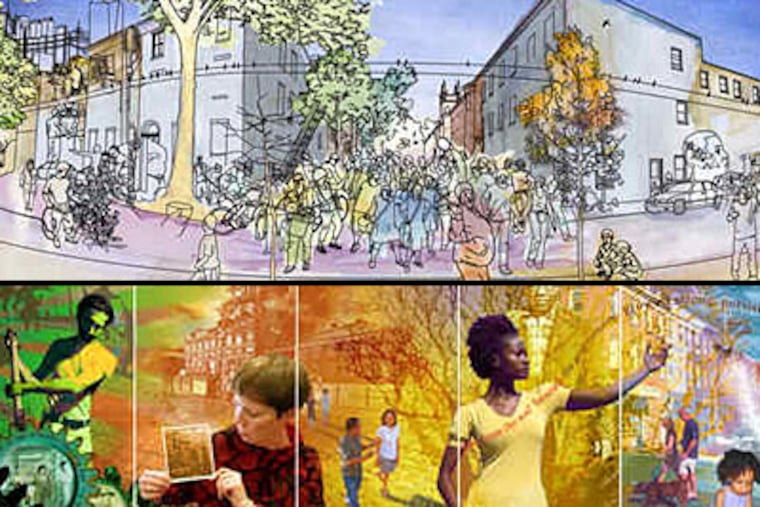An exercise in democratic art: Pick a mural, Philadelphia
Philadelphia is home. But it isn't always that sweet. It's a city not of one giant melting pot, but of many different pots and, sometimes, they clash and bang up against one other.

Philadelphia is home. But it isn't always that sweet.
It's a city not of one giant melting pot, but of many different pots and, sometimes, they clash and bang up against one other.
And yet, it's a city where its people, with their array of colors, cultures, religions and languages, can also come together in a wondrous peace.
As part of its 25th anniversary celebration, the Mural Arts Program has undertaken its first city-wide mural project with the theme, "This We Believe."
In February and March, Mural Arts invited residents to town meetings across the city to talk about what it means to live here, and what Philadelphians believe are their core values.
"We are more alike than we are different," Jane Golden, executive director of the city's Mural Arts Program, said last week, when two mural designs were unveiled.
The eight town meetings drew about 300 people, Golden said. Two teams of artists attended each meeting and listened to what people had to say.
Thursday, the two designs were displayed at the Mural Arts headquarters in the Thomas Eakins House on Mt. Vernon Street, near 17th. One will be chosen by the people.
"Mural painting is the most democratic form of public art," Golden told a small gathering.
She noted that in all previous neighborhood murals, people had to come together to talk about what they wanted.
"So now we will have an election and voting is to take place all over the city."
Voting on the citywide mural runs today through May 18.
You can vote for your favorite design at several sites, including www.philly.com/murals.
Also, voting will take place in the city's library branches.
Team 1, made up of artists Kien Nguyen, Eric Okdeh and Michelle Ortiz, created a colorful design with panels showing different parts of the city, present and past.
Team 2, which included Phillip Adams, David Guinn and Damon Reaves, created a design showing an outpouring of people as part of the city's landscape.
Adams, of Team 2, said that the team "wanted to tell all the stories we heard in little vignettes through the language of line."
Team 2's design has a line drawing of people in the streets, reminiscent of last year's spontaneous celebrations both after the Phillies won the World Series and after President Obama was elected.
The mural shows the good and the bad: someone is homeless, someone is pointing a gun, someone is living in isolation inside an apartment. Washes of color weave the vignettes together.
Then there's the victorious mood of people enjoying outdoors as during a street festival. Someone is banging a pot in celebration.
Okdeh, of Team 1, said that the team thought that Philadelphians had a strong sense of history. Its design is a series of panels showing the industrial past, Independence Hall and stories of neighborhoods like Fishtown and North Philadelphia.
After the winning design is chosen, a series of community paint days are set for June and July so everyone can help paint the mural on sections of parachute cloth.
The completed mural will be hung temporarily in two key Philadelphia locations: in the North Waiting Room at 30th Street Station, and then at the Gallery at Market East.
At the end of the exhibit, sections of the mural will be installed in neighborhoods all over the city. *